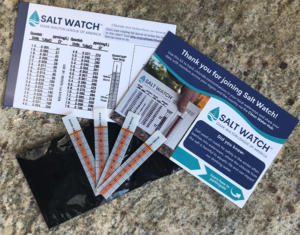Federal judge rules in favor of wetlands, Conservation Compliance

In a win for conservation, water quality and wildlife across the country, on May 29, a federal judge ruled in favor of wetland protections on agricultural lands.
American taxpayers fund a wide variety of programs available to farmers, ranchers and landowners—from commodity payments to conservation incentives. To be eligible for these programs, farmers must not drain or fill wetlands to grow a crop. They must also not farm wetland areas that have been converted for such purposes. This provision was established in the 1985 Farm Bill and is commonly referred to as Swampbuster.
Swampbuster is one of three parts of Conservation Compliance. The other two exist to protect highly erodible land and native sod, known as Sodbuster and Sodsaver, respectively.
These provisions do not regulate land use. They simply say that if a farmer engages in certain activities, they are not eligible for taxpayer-funded payments and subsidies. As such, Conservation Compliance represents an important pact between the American taxpayer and those that receive the benefits they fund.
Iowa lawsuit and ruling
A lawsuit filed in Iowa, CTM Holdings v. U.S. Department of Agriculture, threatened the very existence of Swampbuster, alleging that it was an unconstitutional taking, or seizure of private property by the government. By questioning Swampbuster, it also inherently questioned the constitutionality of Sodbuster.
CTM Holdings is owned by an investor from Chicagoland who owns farmland in Delaware County, Iowa. Nine acres of the 72-acre property were designated a wetland by the U.S. Department of Agriculture well before the land was purchased by CTM Holdings. The plaintiff wanted to cut down trees and alter the land to farm it, which he is legally allowed to do.
On May 29, federal judge C.J. Williams of the Northern District of Iowa ruled in favor of conservation, water quality and wildlife when he dismissed the plaintiff’s claims, declaring Swampbuster constitutional.
In his ruling, Judge Williams noted that Swampbuster “does not independently take anything from, or require anything of, the landowner.” He also asserted:
“First, plaintiff is voluntarily accepting the government’s offer by accepting USDA benefits. In return, plaintiff is agreeing to not destroy or alter its wetlands in a way that makes the cultivating of an agricultural commodity possible on that land. Even under this agreement, plaintiff can do many things with its land—including, for example, what it did here: logging. Further, plaintiff can use its land any way it wants at any time. The only consequence is a potential loss of certain USDA benefits.”
The path ahead
The judge’s ruling in this case is an undeniable win. However, the need persists to defend the laws that protect our wetlands and waters.
Just two years ago, the United States Supreme Court ordered the largest rollback of clean water protections in half a century. In Sackett v. Environmental Protection Agency, the justices ruled that the Clean Water Act does not protect a majority of the nation’s wetlands and millions of miles of streams, drastically narrowing protections for our waterways except in extreme, limited circumstances.
The decision was made despite wetlands’ essential role in improving water quality, dispersing floodwaters and providing critical habitat for wildlife. Further, proven science shows how tributary streams influence downstream waters, and one in three Americans get drinking water from public systems that rely, at least in part, on these small streams. In one way or another, weakening protections for wetlands and streams impacts us all.
The dangerous ruling ignored the plain language of the Clean Water Act that clearly articulates Congressional intent to protect these waters. But its impact did not stop there. Now—against the backdrop of losing more than half of our wetlands in the lower 48, according to the U.S. Fish and Wildlife Service—we are starting to see ripple effects across the country, including more legal attacks. In fact, the same legal group that spurred the Sackett case represented CTM Holdings in Iowa.
At the end of the day, these legal fights will affect natural resources that are important to us all—clean water, wetlands, wildlife habitat and healthy landscapes. At the League, we will remain engaged and inform members about opportunities to get involved.
To watch a Clean Water Webinar about the lawsuit, recorded before the judge’s verdict, click here.
 Your kit will include a bottle containing 25 nitrate test strips which you can use to test your water source(s) throughout the year. You’ll also receive postcards explaining how to use your nitrate test strips and how to share your Nitrate Watch results on the Clean Water Hub.
Your kit will include a bottle containing 25 nitrate test strips which you can use to test your water source(s) throughout the year. You’ll also receive postcards explaining how to use your nitrate test strips and how to share your Nitrate Watch results on the Clean Water Hub. Your kit will include four test strips so you can test your waterway throughout the season. You’ll also receive a chart to help you interpret your results and a postcard with instructions for completing a Salt Watch test and reporting your findings.
Your kit will include four test strips so you can test your waterway throughout the season. You’ll also receive a chart to help you interpret your results and a postcard with instructions for completing a Salt Watch test and reporting your findings.